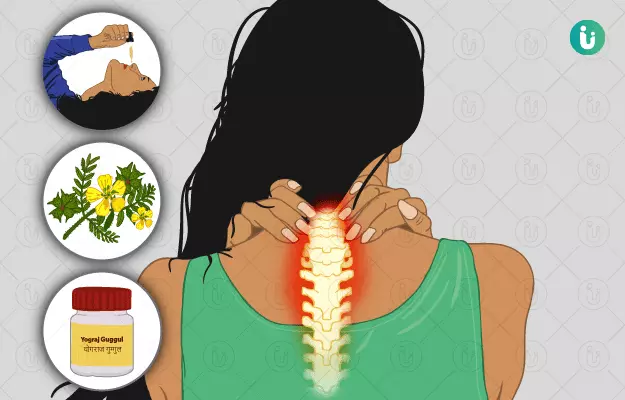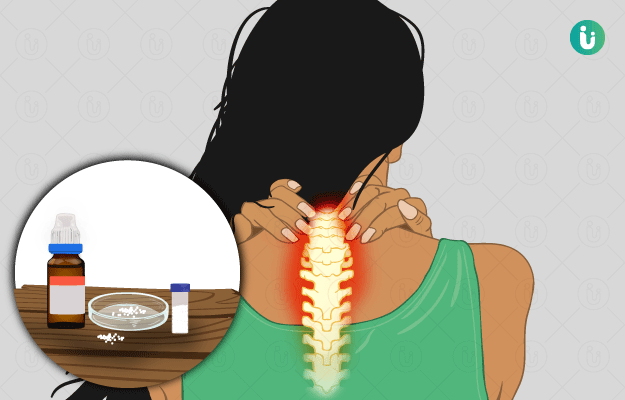Cervical pain, also called manya shula in Ayurveda, refers to stiffness and pain in the cervical region of the neck and back. This can be caused by conditions such as ankylosing spondylitis, cervical spondylosis, rheumatoid arthritis and prolapsed disc.
Ayurveda describes numerous treatments for the management of cervical pain. These include abhyanga (oil massage), ruksha swedana (dry sudation or sweat therapy), manya basti (an external basti in which medicated oil is pooled over the neck), nasya (nasal insufflation) and lepa (coating the affected body part with medications). Herbs such as rasonam (garlic) and gokshura (small caltrops) have been used in the management of cervical pain. Medicines that are used in the treatment of cervical pain are dashmoola kwatha, prasarini taila, yogaraja guggulu and laksha guggulu among others.








































